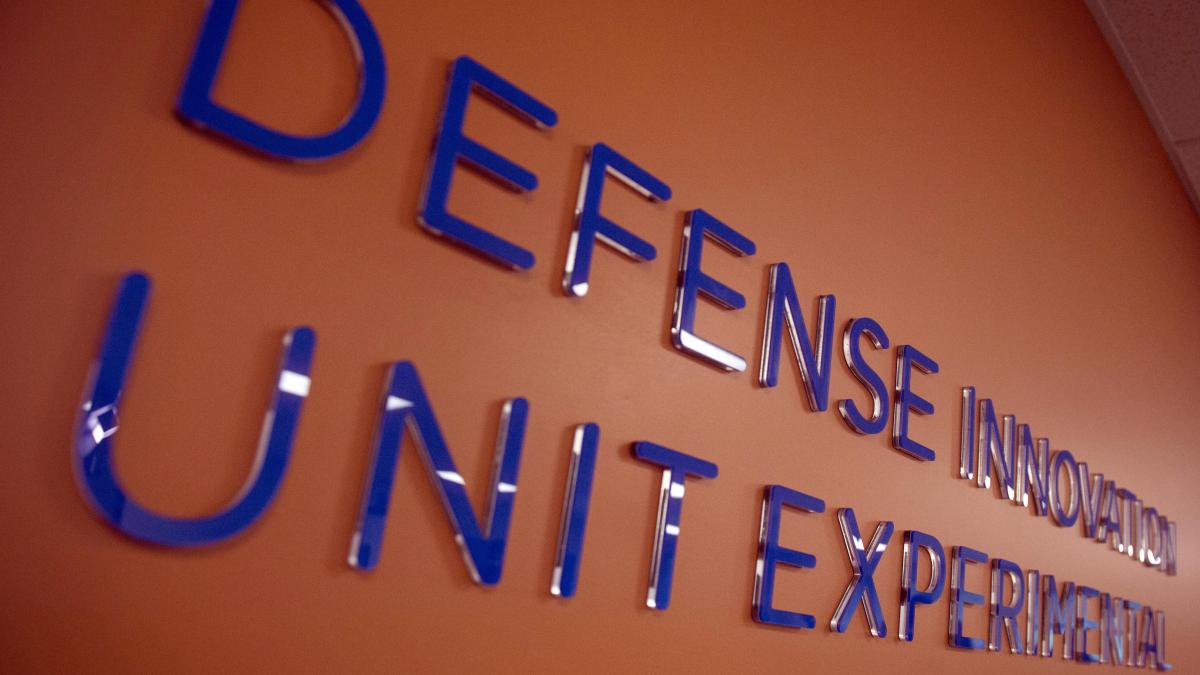New DIUx program to give acquisition professionals a crash course in rapid procurement

The Pentagon’s experimental procurement group is looking for acquisition professionals who want to learn how to make the Defense Department a more attractive customer to cutting-edge technology companies.
The Defense Innovation Unit Experimental, better known as DIUx, is launching an acquisition program, HACQer, through which it will select a few motivated DOD acquisition professionals for a four month detail at its headquarters in Mountain View, California. The program is another opportunity for the group to share its ideas about how to acquire technology in a way that’s not traditional for the Pentagon.
“I think what we hope to achieve is that one, they get a fundamental, foundational understanding of how to leverage different acquisition tools for different problems they’re trying to solve,” said Air Force Maj. David Rothzeid, pathways manager at DIUx.
Participants in the HACQer program are going to get a “rich and full experience” in absorbing the mission of DIUx, Rothzeid said, including an understanding of the way the group uses tools to work with startup technology companies.
“Additionally there’s a cultural aspect that we hope that they can then bring back because it’s the success that sort of begets the culture,” Rothzeid said of the program. “So if they have demonstrated successes here, then it’ll be a lot easier for them to implement that mindset and that attitude back in their home stations as well.”
One of the alternative tools in particular that DIUx has embraced is what is known as other transaction agreements (OTAs or OTs) — a decades-old authority Congress recently expanded in the 2016 National Defense Authorization Act to allow “successful prototype projects to serve as justification for follow-on production contracts without the need for further competition,” as DIUx explains in its recently released annual report. Just in 2017, DIUx awarded 48 prototype agreements for $104 million, according to the report.
In fact, DIUx last year helped the Pentagon achieve a significant milestone: transitioning, for the first time, a prototype project into a follow-on production agreement using OTAs to get around the cumbersome traditional acquisition process. The unit to date has successfully transitioned three prototype projects into production contracts this way, Rothzeid said.
The DIUx method of using other transaction agreements is attractive to smaller companies that usually do not contract with the Defense Department because parts of the deals are negotiable (like intellectual property rights) and the time to an award is much faster than the traditional contracting process, former DIUx Managing Director Raj Shah has said.
The initial HACQer pilot has four slots open, and two will do their rotations at a time. The team is currently accepting applications to join, and the first professionals selected are expected to arrive in Mountain View on July 1, he said.
“And then from there we’ll report our findings and either revamp the system, tweak it or scale it accordingly,” Rothzeid said. “I will say there’s a lot of interest from both the acquisition community but also from the professional development workforce for how this HACQer program might operate, and help encourage some of our mid-to-senior level acquisition professionals broaden their depths and experiences.”
One person critical to the rollout of the HACQer program was Mercedes Fitchett, an acquisition specialist in the Air Force’s acquisition headquarters. She knew people involved with DIUx and said she reached out to them because she wanted to learn more about how the group was trying to streamline acquisition and deliver capabilities to the warfighter. She got approval from her leadership to spend three months at DIUx headquarters, from mid-October 2017 to mid-January.
“She was critical in helping establish this [the HACQer program] and we’re really excited to see her legacy kind of carry forward here at DIUx,” Rothzeid said of Fitchett.
DIUx’s “secret sauce,” Fitchett said, is the way it works with the DOD partner organizations to develop a simple problem statement — what looks like a long paragraph — that serves as the basis for a solicitation.
“It was really fascinating to be able to see a DIUx and DOD partner work together from the beginning of the process, before the solicitation has been posted on DIUx,” Fitchett said. “Because that ability to take a warfighter requirement and translate it into language that’s going to be understandable for non-traditional vendors is one of the key requirements in, at the end of the day, having a successful prototype.”
The long paragraph helps to lower the barrier to entry for those non-traditional contractors, Fitchett said.
“If you want to be exposed to rapid, innovative ways of delivering capability to the warfighter with some of the most impressive technology companies in the U.S. technology, base come to DIUx and apply to the HACQer program,” she said.
Fitchett said DIUx Pathways Senior Director Lauren Schmidt had the idea for the program and gave her the bandwidth to develop the idea into what it will be for the first participants.
After three months at DIUx, Fitchett is back at the Air Force acquisition headquarters doing presentations, sharing experiences and bringing in speakers.
“I knew very little about other transactions, and I knew very little about the commercial solutions opening before I got there,” Fitchett said. “But I feel like I learned tremendously from being involved with each of the five project teams to see how they implemented the process.”
She sees other transactions as another tool within a “growing toolkit” for the acquisition community to use. But she noted she thinks it’s important for people other than just the acquisition community to understand how they work.
“I think it’s really important for the requirers and for the warfighters to understand these authorities because it then gives them also a greater understanding of how capability can be delivered more quickly, more effectively, more affordably, to the warfighter,” she said. “And so for me, I see DIUx OTs and other authorities as part of a larger culture change of which the acquisition community is one key player, but not the only player. It’s a team effort.”
Other transactions, Rothzeid said, are flexible to helping you achieve whatever your end objective is, but shouldn’t be used as a “get-around.”
“Education is definitely critical and ensuring that the OTs are used in a thoughtful manner, not as necessarily a get-around but more as a streamlined approach towards achieving, again, whatever that end objective,” Rothzeid said, “And is not exclusive to these small companies, nor is it exclusionary to the traditional defense contractors or the big primes. What it aims to achieve is unique arrangements whereby we can incorporate advanced technology back into the DOD ecosystem, where under your traditional acquisition system it may not be happening to the level that it should be.”
Correction April 25, 2018 — This story has been updated to reflect the 2016 NDAA’s expansion of other transaction authorities. The DOD first received OTA authorities, in a more limited form, in 1989.






